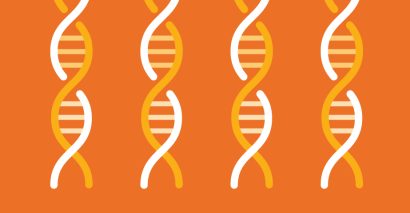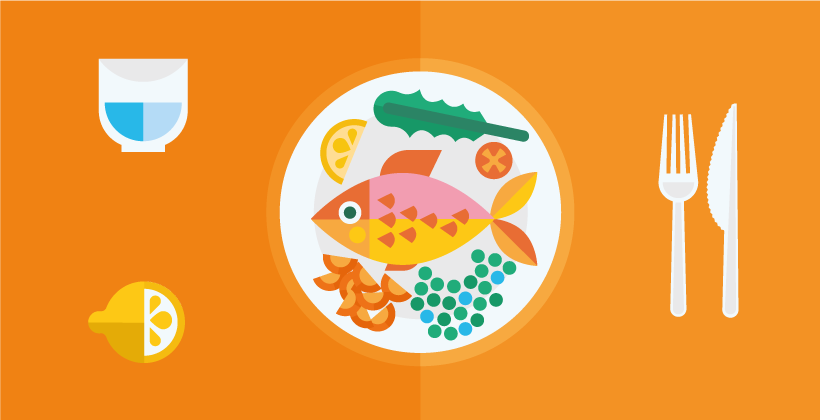Nutrition Standards for Healthy School Lunches in Europe
Last Updated : 09 May 2012Cultural and economic differences influence the type and quality of school lunches throughout Europe. School lunch makes a substantial contribution to children’s total energy and nutritional intake. Therefore, there are efforts amongst governments, schools and parents to improve the nutritional value of school lunches.
The school lunch provides an important opportunity for learning healthy habits, and well-balanced school meals have been linked to improved concentration in class, better educational outcomes and fewer sick days.1,2 Given the importance of these meals, what is being done across Europe to ensure all children have a balanced and enjoyable lunch?
National school meal standards
Many countries in Europe have policies to help schools provide nutritionally balanced meals which also reflect the general eating culture of each nation. Often, lunch is eaten in a cafeteria-like setting where children receive food from a central service point (e.g. Finland, Sweden and Italy).3
In Finland and Sweden, where all school meals are fully funded by the government, lunches follow national dietary guidelines including the ‘plate model’. An example meal is presented to guide children’s self-service. Schools in Sweden will be given a web-based evaluation tool.4,5
In England, a range of food is offered at lunch time, governed by both food-based and nutrient-based standards. The availability of foods high in salt, sugars and fat is restricted (e.g. deep-fried foods limited to no more than two portions per week) and nutrient-rich foods are promoted (e.g. at least one portion of fruit and one portion of vegetables available per day). The food and drink provided in an average school lunch must meet criteria set for 14 different nutrients.6
In France, each school lunch has to include a main dish (based on meat, fish, eggs, offal or cheese), a side dish, a dairy product and either a starter or dessert. The nutritional standards regulate how frequently dishes are served in a 20-meal cycle. For example, at least 10 meals in the cycle must be accompanied by cooked vegetables, 10 meals with pulses, starchy foods or cereals, 8 meals with a fresh fruit dessert. Portion sizes are set by dish and age group.7
Some countries – including Norway, Denmark, the Netherlands and Belgium – do not have a compulsory system of school meals. In most countries (except in Finland) schools allow children to bring their own packed lunches.3
What goes into a balanced packed lunch?
It takes effort to pack a healthy lunch, but the following suggestions provide a helpful guide. Include a variety of foods to help children get all the nutrients they need.
A balanced packed lunch should include8:
- At least one portion of fruit and one portion of vegetables (a handful, raw or cooked).
- A portion of starchy food (e.g. bread roll, pitta bread, tortilla wrap, pasta, rice) – wholegrain varieties when possible.
- A portion of dairy food (e.g. semi-skimmed milk, cheese, yoghurt).
- A portion of protein food: meat (e.g. chicken, beef with fat cut off, or occasionally meat products such as ham and sausages), fish (oily fish e.g. salmon or sardines at least once every three weeks), eggs, or pulses.
- A drink of water, fruit juice, or semi-skimmed milk.
- Some snack ideas are unsalted nuts, fresh or dried fruit, or chopped vegetables with cheese or hummus; or a small packet of crisps or fruit-based cakes and bars can be included from time to time for variety and appeal.
Enjoying lunch
Across Europe, school lunch nutrition standards are the basis for improving nutritional intake of all school children. However, this will only be successful if pupils like and choose to eat these meals – this is an aspect that has been largely neglected in the development of school meals until now. Therefore, children are now being involved from the beginning of foodservice planning including taste-testing. Parents, too, are encouraged to be involved in school meal policies. Changes to the dining environment can also improve food choices, reduce queuing times, and support social interaction. Importantly, a focus on school meals should be part of a whole school approach to health promotion.1,9,10
References
- Storey HC et al. (2011). A randomized controlled trial of the effect of school food and dining room modifications on classroom behaviour in secondary school children. Eur J Clin Nutr 65(1):32–8.F
- Belot M & James J. (2011). Healthy school meals and educational outcomes. J Health Econ 30(3):489–504.
- School Food Trust (2008). The provision of school food in 18 countries.
- Finnish National Board of Education (2008). School meals in Finland. Finnish National Board of Education.
- Livsmedelsverket website, Skolmåltider section.
- The Education (Nutritional Standards and Requirements for School Food) (England) (Amendment) Regulations 2011 No. 1190.
- Arrêté du 30 septembre 2011 relatif à la qualité nutritionnelle des repas servis dans le cadre de la restauration scolaire JORF n°0229 du 2 octobre 2011:16575.
- School Food Trust, packed lunches section.
- Harnoun D et al. (2011). Nutrient-based standards for school lunches complement food-based standards and improve pupils' nutrient intake profile. Br J Nutr 106(4):472–4.
- Bertin M et al. (2012). School meals in French secondary state schools: do national recommendations lead to healthier nutrition on offer? Br J Nutr 107(3):416–27.



